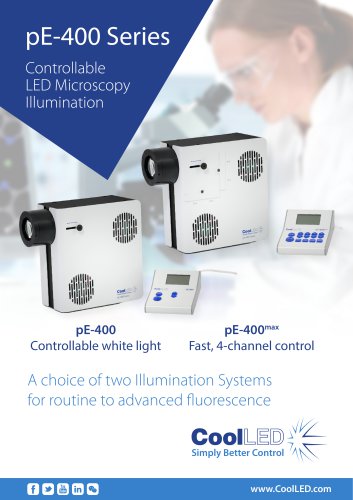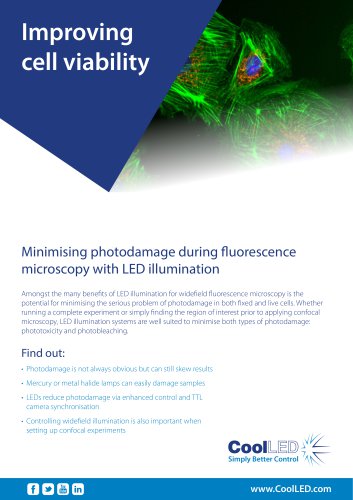
Catalog excerpts

How to configure your microscope system for bright, high-contrast fluorescence images The type and amount of light hitting the sample plane will make or break a fluorescence microscopy experiment. It is undoubtedly an important property of the microscope set up to be optimised, but some aspects can be overlooked, leading to reduced image quality. Where our previous white paper1 guided microscopists on how to measure irradiance at the sample plane, we now set out to advise how it can be improved to deliver quality images and insightful data. Find out: • How to increase irradiance • Which type of illumination system delivers highest irradiance • Which microscope components should also be considered • Why stronger irradiance is not always optimum Simply Better Control
Open the catalog to page 1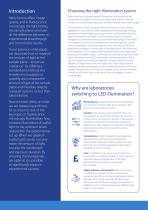
Choosing the right illumination system Many factors affect image quality, and in fluorescence microscopy the light hitting the sample plane can make all the difference between an experimental breakthrough and inconclusive results. In our previous white paper, we discussed how to measure the amount of light at the sample plane - known as irradiance.1 By offering a standardised method, this enables microscopists to quantify and compare the amount of light at the sample plane and therefore directly compare systems to find their ideal solution. When looking to improve sample illumination, the...
Open the catalog to page 2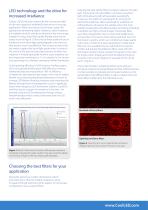
LED technology and the drive for increased irradiance Today’s LED illumination systems for life sciences are ideal for the vast majority of widefield fluorescence microscopy applications. When choosing an illumination system for applications demanding higher irradiance, direct fit options are available which fit directly to the back of the microscope instead of using a liquid light guide, thereby reducing the losses incurred (Figure 1). Not only do these avoid the loss of irradiance as the liquid light guide degrades over time, but they are also more cost-effective. This is because they...
Open the catalog to page 3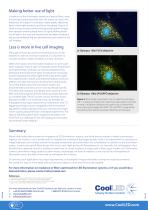
Making better use of light In addition to the illumination system and optical filters, other microscope components also have the means to impact the brightness of images. For example, higher quality objectives permit more light to pass to and from the sample (Figure 3) while a more sensitive camera will generate brighter images from samples emitting lower levels of signal. Making better use of light in this way and lowering the excitation irradiance reduces photobleaching and phototoxicity and is ideal for live cell imaging. Less is more in live cell imaging Although we have discussed how...
Open the catalog to page 4All CoolLED catalogs and technical brochures
-
pE-400 Series
4 Pages
-
pT-100
2 Pages
-
Improving cell viability
4 Pages


